Marantz NR1608 Dolby Atmos AV receiver
AV receivers may have a reputation for shelf-bowing bulk, but you don’t need a behemoth amp to bring home immersive home cinema, particularly if you’re kitting out a regular-sized living room. A slimline model like the Marantz NR1608 will do the job just as well.
With 4K HDMI inputs, Bluetooth and Dolby Atmos, it offers everything a home entertainment upgrader might want.
Dolby Atmos is going gangbusters right now. The 3D sound format (that’s to say, full surround with a height channel for extra immersion) has entered the mainstream. BT and Sky both embellish 4K sports broadcasts with Atmos audio, Sky is including Dolby Atmos on a growing number of Sky Cinema 4K movies too. Xbox One and PC gamers can even frag in Atmos.
Expect to pay £599, $750 or AU$1299 for the the Marantz NR1608.
Build and installation
Marantz AV and Hi-Fi kit has a distinctive look, and the NR1608 doesn’t break the mould. It’s hardly modern, but it is classic. Build quality can be considered solid for the price and the half-height (105mm) design makes it a relatively easy component to accommodate.
We’ve seen a number of NR models from Marantz since the series launched in 2011, but this is the first to offer Heos interoperability. This means the AVR can be integrated with Heos active speakers, allowing you to stream music to, fro, and around the house; the NR1608 also supports streaming audio services like Spotify, Tidal and Deezer, via the Heos app.
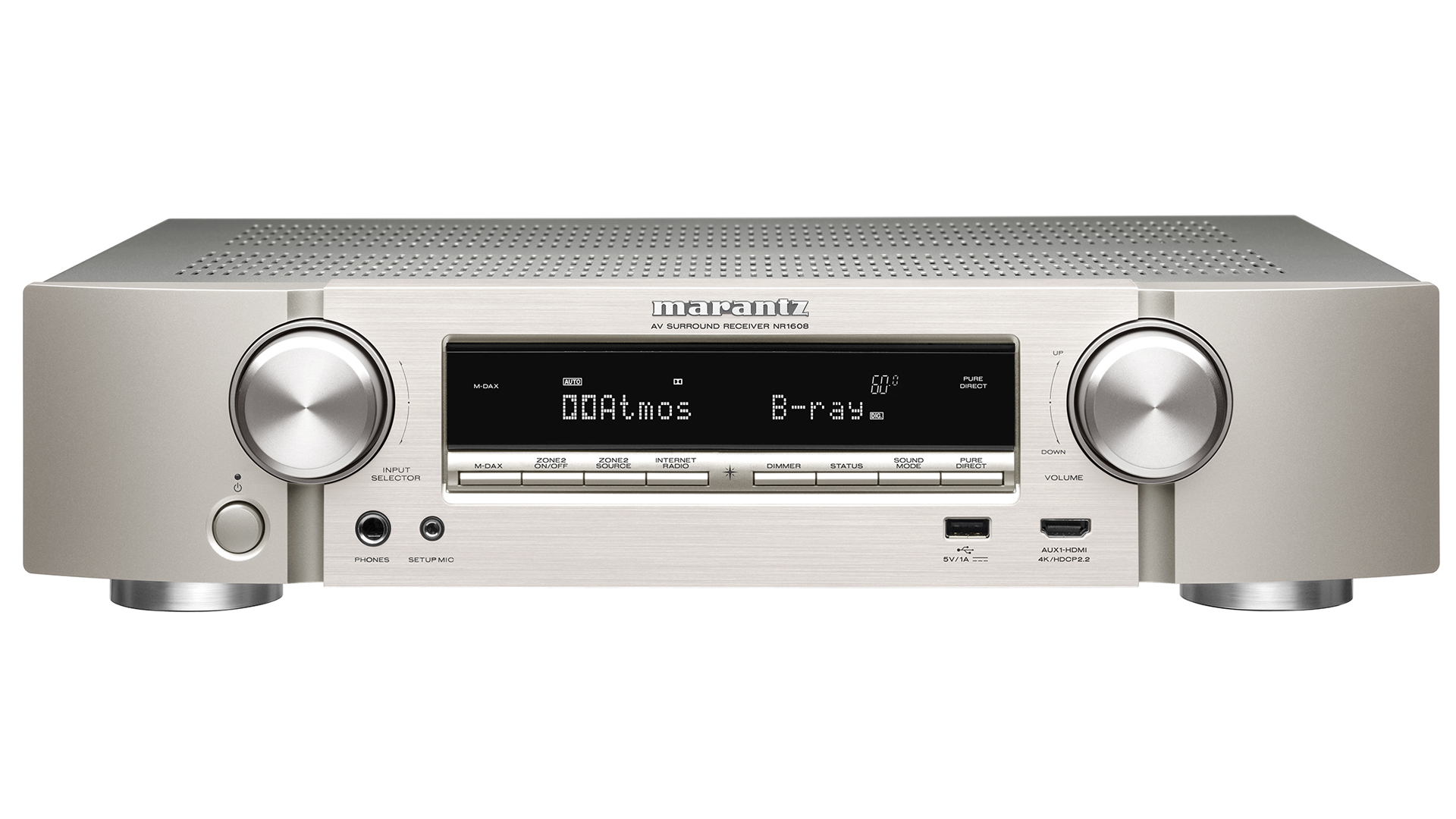
In addition to Dolby Atmos, there’s also DTS:X decoding with DTS HD MA backwards compatibility.
Functionality is high. There are eight HDMI inputs in total, all of which support 4K 60Hz video with HDCP 2.2. This means the AVR can function as the heart of a huge home entertainment stack - there’s room for an XBox One X, PS4 Pro and Nintendo Switch, as well as a 4K Blu-ray player, Sky Q STB and your favorite streaming gizmos.
There’s also coaxial and optical digital audio inputs, a trio of legacy AV phonos and two component jacks, plus an Ethernet port if you’d rather hardwire than use the onboard Wi-Fi.
The front fascia includes a USB port and full-size headphone jack, a stereo output supports a second zone music. Don’t plan on using the NR1608 with both a TV and projector, or feed a second room zone though. There’s only a single HDMI output.
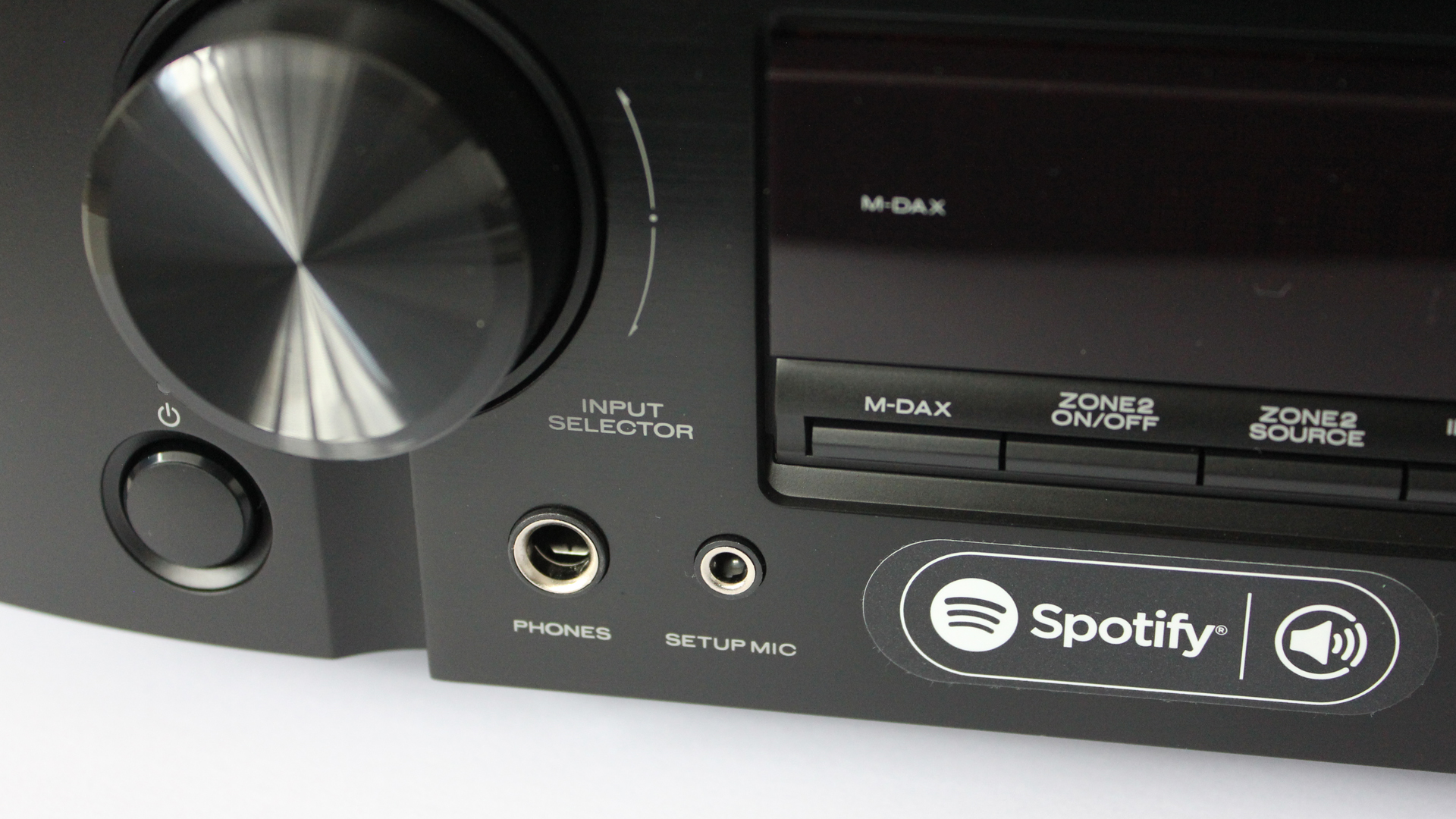
A well designed GUI handholds through the installation process. Automatic room calibration is via Audyssey MultEQ. Just plug in the supplied microphone and follow the onscreen prompts. You can hone its precision by doing multiple seating measurements. I measured six positions on and around my sofa, and ended up with a well balanced soundstage, with often seismic bass.
With seven channels of welly, the AVR can be configured for 5.1.2 Dolby Atmos or 7.1 Dolby Surround, depending on your speaker preference and room design. We opted for a 5.1.2 Atmos layout, using a couple of Dolby-enabled up-firers for the height channel. If you have a opt for a conventional 7.1 installation, there’s still a benefit to playing Dolby Atmos soundtracks, as these will be unpacked in a 7.1 format.
Performance
The NR1608 does a sterling job with both multichannel and stereo content. A 7x 50w per channel output may seem relatively underpowered, but there’s no shortage of dynamics and slam.
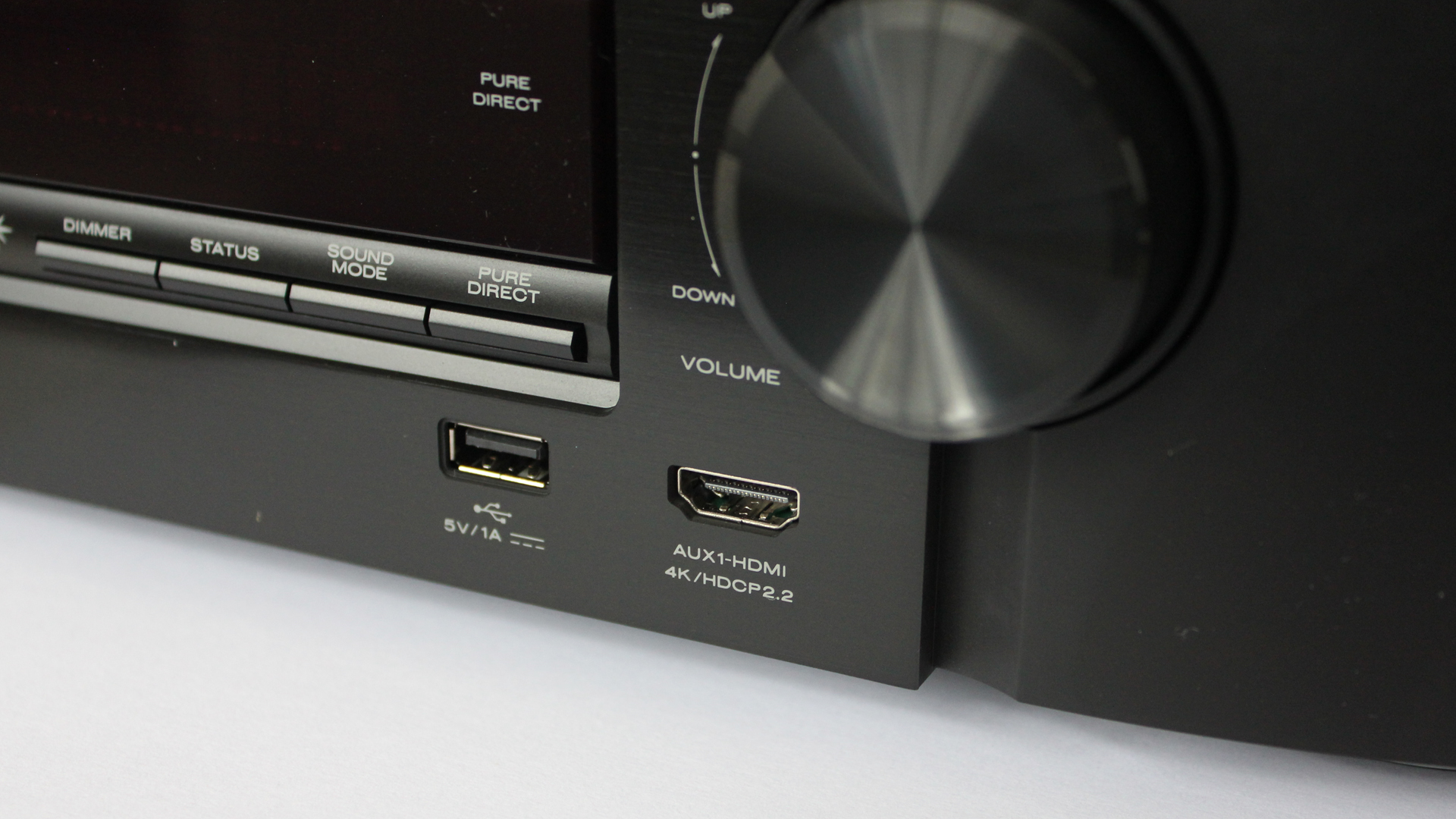
Dolby Atmos sport, via Sky Q, proves a revelation. The height and surround channels create a convincing crowd ambiance during Live Premiership football, leaving commentary locked to the front soundstage. The receiver handles movie action with similar ease - transients are whip-crack fast; the front L/C/R painted wide and high.
The Dolby Atmos mix on Teenage Mutant Ninja Turtles: Out of The Shadows (Blu-ray) might kindly be described as a cacophony. It’s certainly a challenge for any Atmos AVR to to keep intelligible - histrionic action, blaring music, shouted dialogue and general kitchen sink chaos - but this Marantz creates a credible sonic landscape from the mayhem.
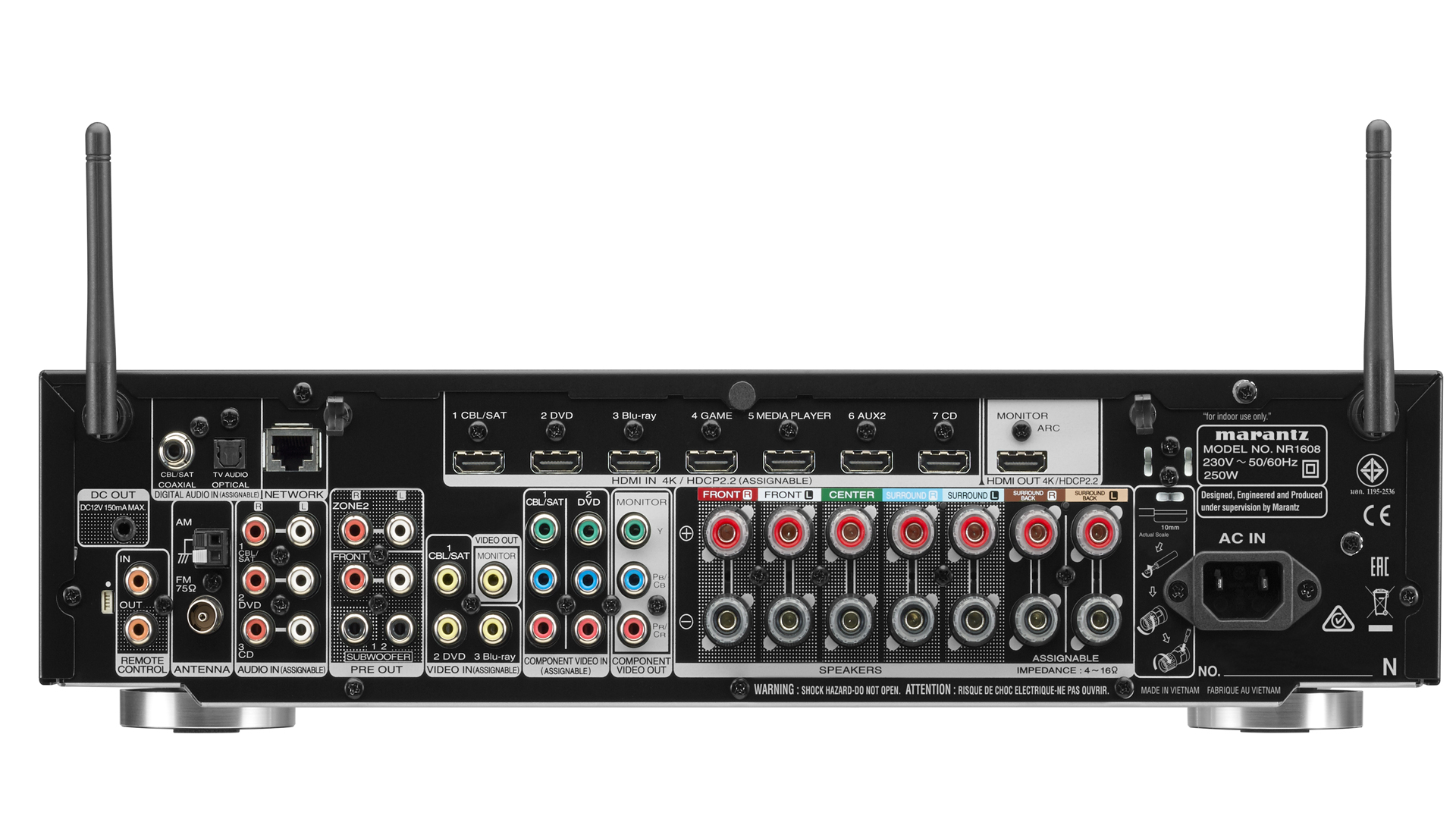
Better crafted audio can sound divine. The iconic Vangelis opening to Blade Runner The Final Cut (Blu-ray, Dolby TrueHD) is smooth and dramatic. Gas towers bloom across the front soundstage, the score offers unsettled jangles in the round, ships fly into the left rear and then out of the right. The incessant rain of Los Angeles 2019 pitter patters realistically.
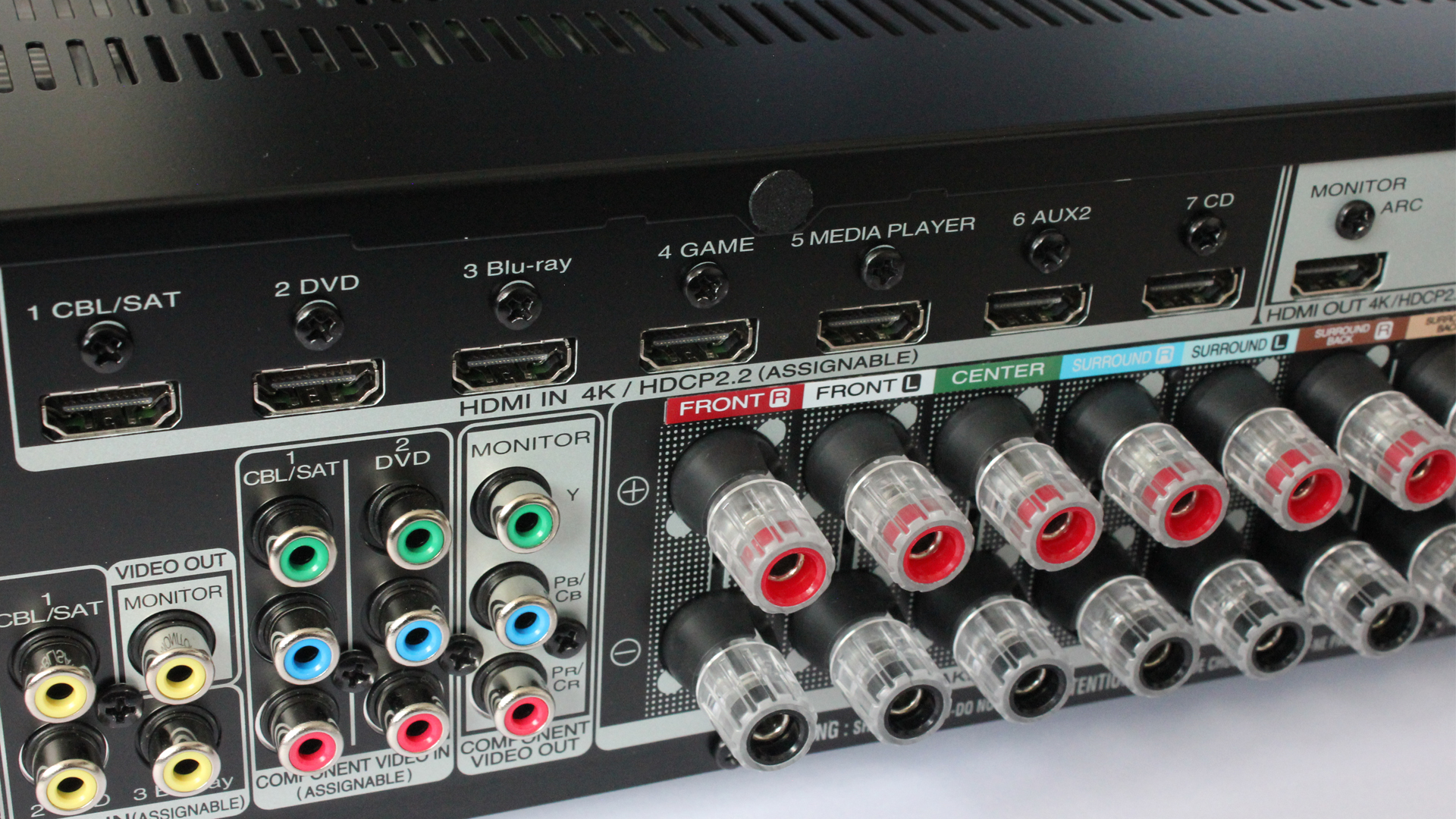
While the NR1608 looks much like its predecessors, there have been some changes beneath the hood. A new 32 bit DAC, the AK4458 from Asahi Kasei, makes its debut, accompanied by a fresh selection of audio components, which means a subtle change to the character of the receiver. There’s more focus on the mid-range, vocals seem somehow rounder.
Naturally, any AV receiver worth its salt needs stereophonic finesse too. The good news is with High Res sources, the NR1608 doesn’t disappoint. Native file compatibility includes support for DSD (both 2.8 and 5.6MHz), and 24-bit FLAC, ALAC and WAV. MQA tracks, played from a Bluesound Vault with MQA decoding, enjoy studio quality ambiance.
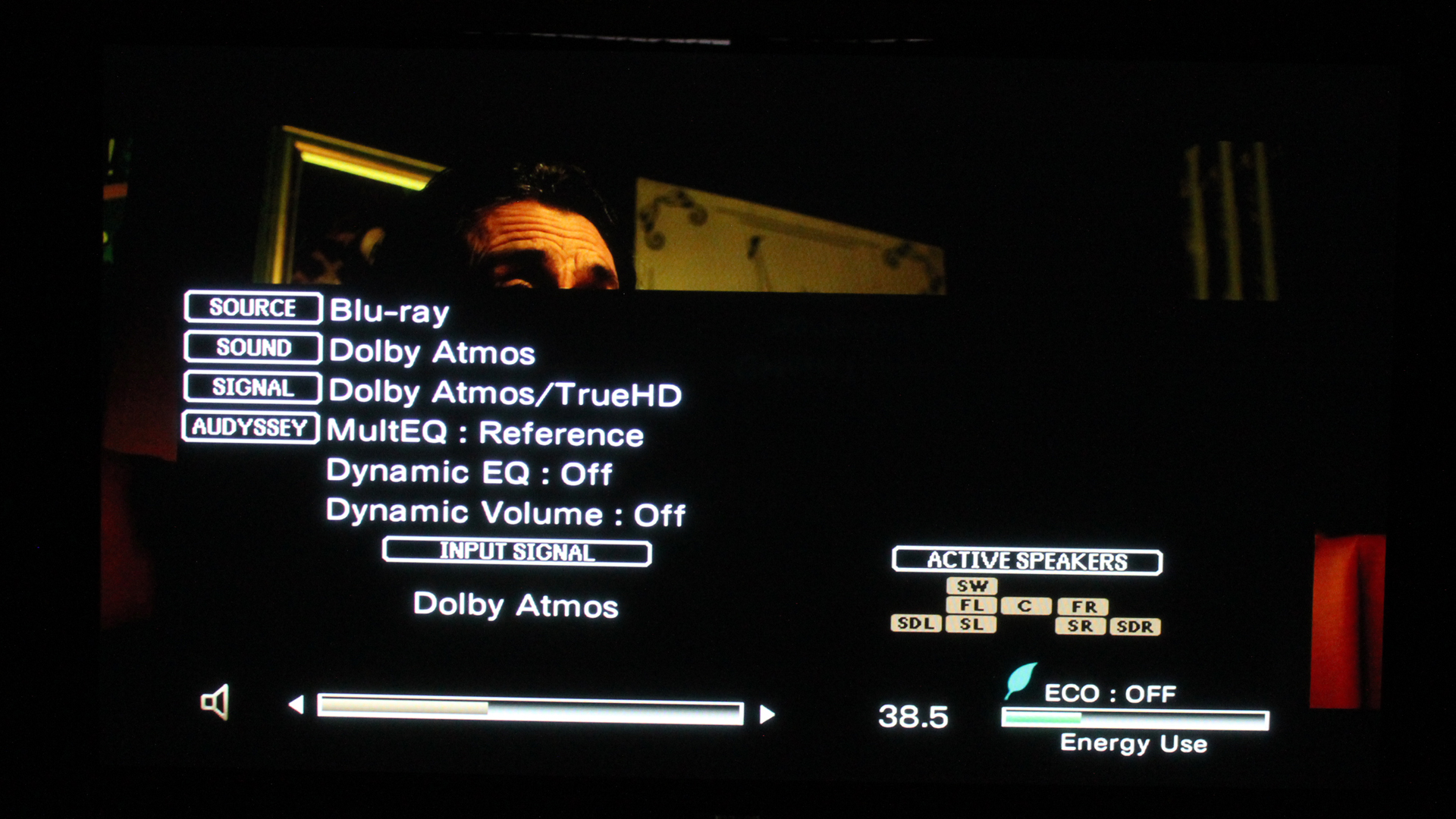
Bjork’s percussive tour de force Family (MQA) is clean and uncluttered, while a 24-bit/192kHz remaster of Hotel California has toe-tapping musicality.
Final verdict
The NR1608 is a proper AV entertainer with a fetching form factor. It can slam and pan with action movies, but has an inherent stereophony that plays nice with High-Res audio too.
There are caveats of course - the amp doesn’t appreciate being driven too hard, we would expect two HDMI outputs for full system versatility, and 5.1.2 Atmos is more effective in smaller listening rooms than large - but the end result easily trounces what you’ll get from an Atmos soundbar. And if you’ve already invested in (or like the look of) a Heos wireless sound system, it positively demands an audition.
0 comments:
Post a Comment